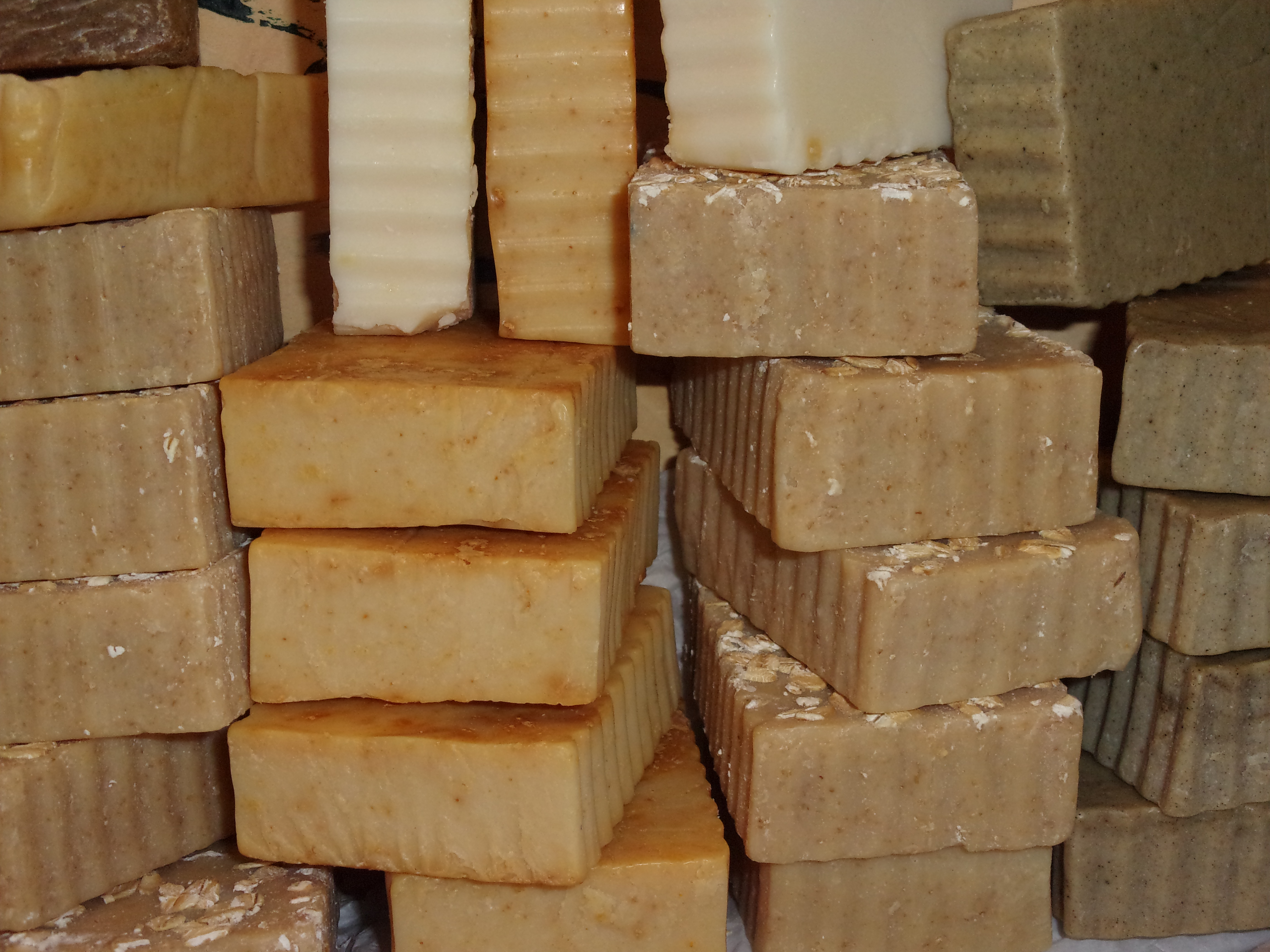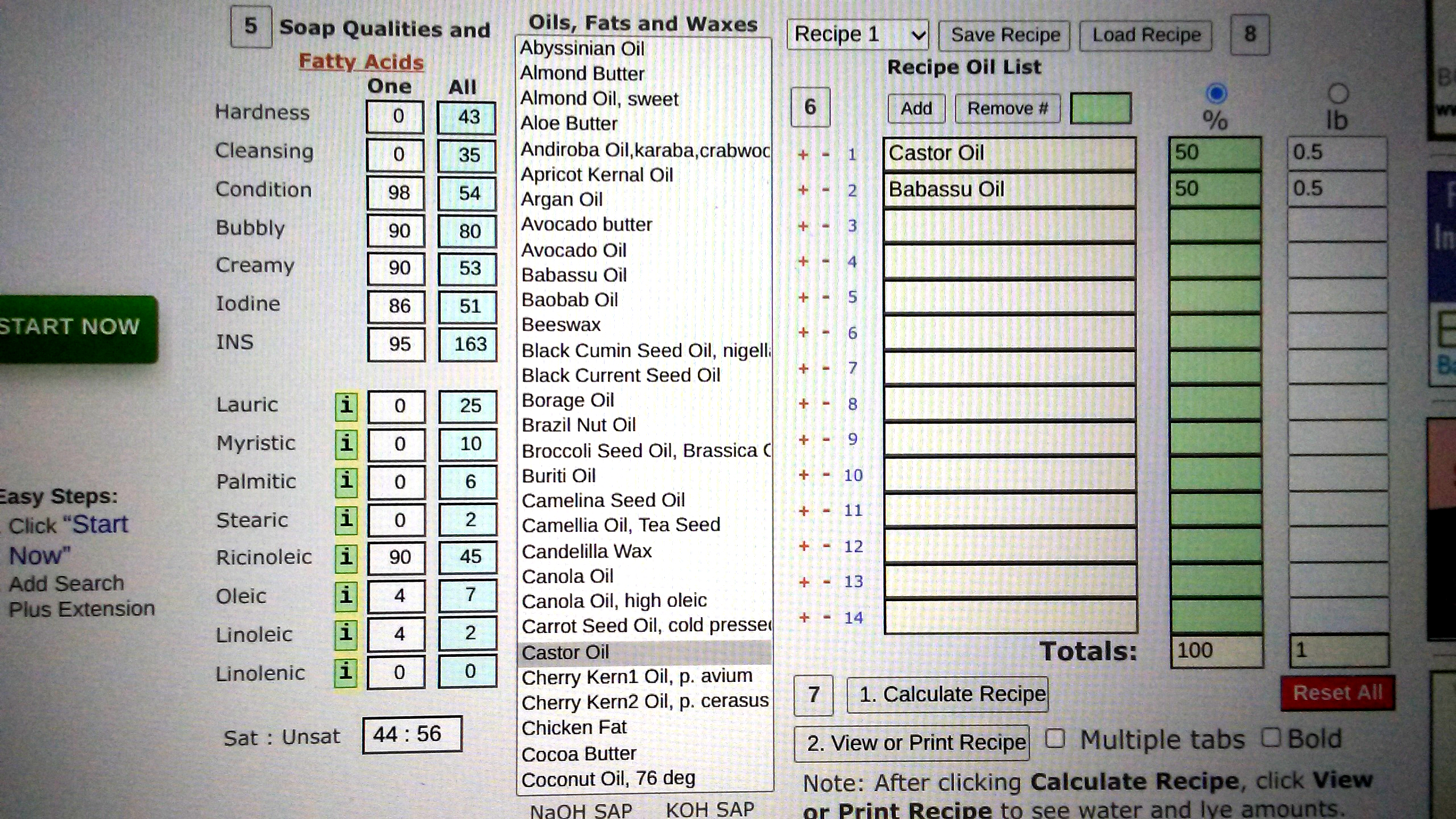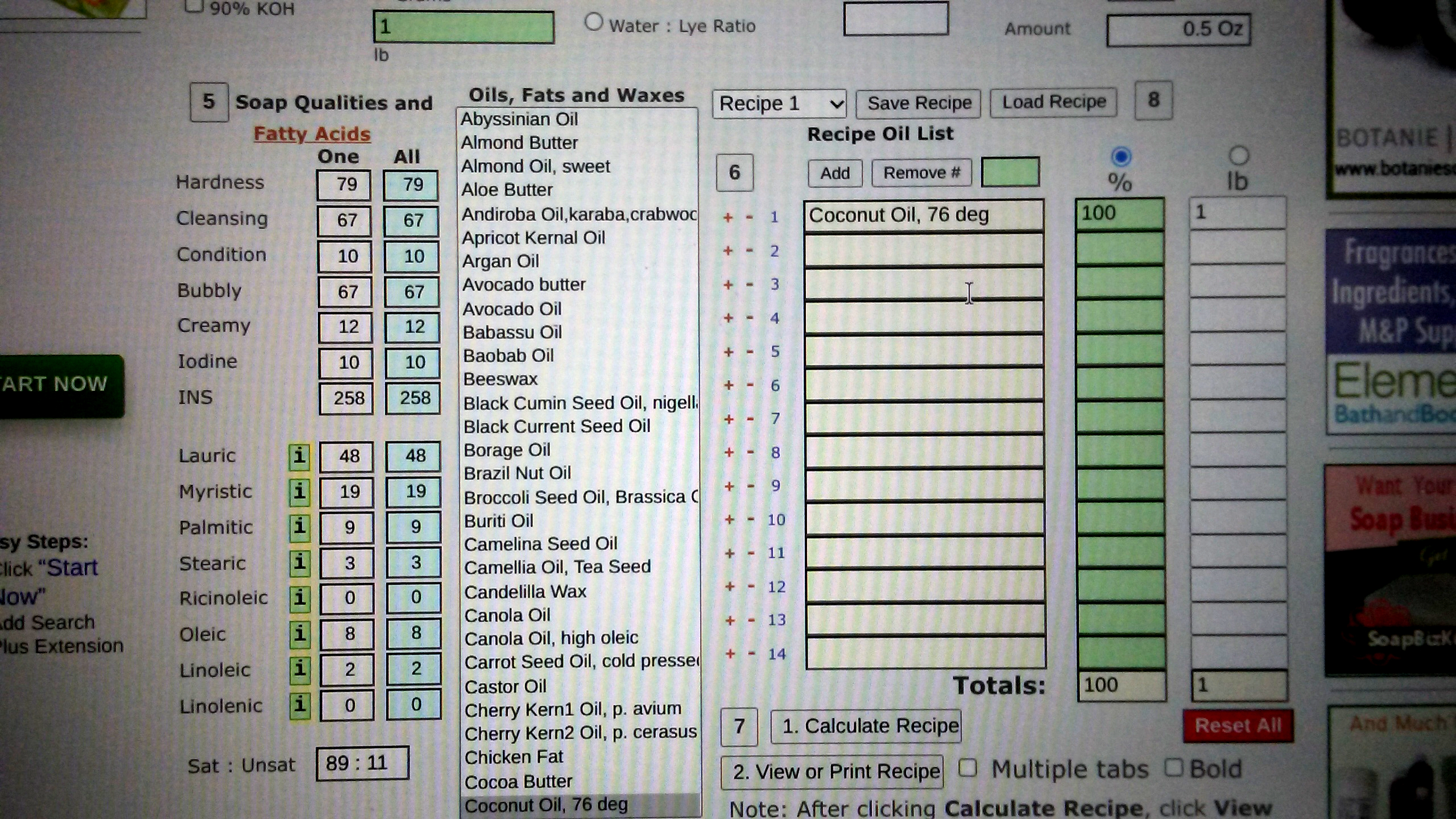How to enhance your soaps.

Improve your soap bar quality and learn how to enhance your soaps by looking at seven unique soap attributes. These attributes are not so much the look, feel or scent of the soap, but mostly on how the soap performs when used.
The seven soap attributes are: Hardness, Cleansing, Conditioning, Bubbly, Creamy, Iodine and INS. Each soap attribute has a set of numbers in a range. By adding or subtracting oils into the recipe you can learn to increase certain soap features or diminish them.
Lets say that you have recently created a soap. You washed your hands with the soap but found that it lacked in certain attributes. You weren't sure what it lacked or even how to fix the problem! Well, now you can find out whats lacking. Look at your recipe through the seven quality numbers and come up with a solution. It could be in the choice of oils or too much of one particular oil in the recipe.
To find out the seven attribute numbers for your soap recipe, you'll need to know two things. First, you must know the oil names you had used and the percent of each oil used in your soap recipe. For example: Corn Oil-60%, Canola Oil-20% and Soybean Oil-20%. The total must be 100%. If you have this information, then you can click on this link to the Soap-Calc recipe calculator and enter in your soap recipe information next.
Use the soap-calc to find your recipe attributes.

When you arrive at the Soap-Calc website, click on the "recipe calculator" button located on the upper left side of the main menu bar. When the recipe calculator page appears, scroll up a bit to bring all the columns into view.
Go to the white column listed as "Oils, Fats and Waxes". Double click on each oil that was part of your soap recipe. When you double click, the oil name will appear on the yellow column to the right labeled "Recipe Oil List". Next, type the percent of each oil used in the adjacent green column labeled as "%". When all of your recipe oils are listed and percentage amounts are filled in, click on the gray "Calculate Recipe" button underneath the yellow column.
Now look over to the upper left. You'll see a title "Soap Qualities and Fatty Acids". Underneath that title are two columns side by side. One is white, the other is light blue. The white column gives you the highlighted oil from the "Oils, Fats and Waxes" column. The light blue column (the one we are interested in) combines all of your oils and their percentage amounts together to give you the complete soap qualities/attributes of your recipe.
Write these numbers down. Take a look below to see how your recipe numbers compare with the normal ranges in the seven qualities listed below.
Compare your soap recipe with the seven quality range numbers.
These are the 7 soap attributes with their range numbers of quality. You'll want to become familiar with these when you begin to improve and learn how to enhance your soap bar quality. These range numbers are guidelines only. They are not absolutes. When you become more skilled, you'll make soaps with qualities outside of these parameters.
1.HARDNESS. Range: ( 29--------------------------------------------------54 ). The higher the number the harder the soap bar and the longer it will last. These numbers are the normal range for soap bar hardness.
2. CLEANSING. Range: ( 12--------------------------------------------------22 ). The lower the number the more mild the soap bar. Aim for lower numbers if you like a milder soap.
3. CONDITIONING. Range: ( 44--------------------------------------------------69 ). The higher the number the more soothing and conditioning the soap bar will be. These numbers are within the average for conditioning.
4. BUBBLY. Range: (14---------------------------------------------------46 ). A higher number equates to more bubbly lather. These numbers are within the normal range for bubbly.
5. CREAMY. Range: ( 16--------------------------------------------------48 ). The higher the number the more creamy lather will be present. These numbers are within the normal range for creamy.
6. IODINE. Range: ( 41--------------------------------------------------70 ). Best to have a number under 70. If your Iodine number is above ( 70 ) your soap will be soft and could potentially become rancid over time. If your Iodine number is below ( 70 ) your soap will be harder and probably never get rancid.
7. INS. Range: ( 136----------------------------------------------165 ). Iodine In Saponification number. The lower the number the softer the soap bar. The best number to aim for is 160. The higher the number the harder the soap bar. These numbers are within the normal range.
Learn how to enhance your soaps using suitable oils in correct amounts.

The last step is to rework your recipe on the soap-calc. It's a process for you to know how to enhance your soaps by adding or removing oils. For example lets say that you were looking for a much harder soap bar than the one you made.
To rework your recipe, delete all of your oils and add coconut oil as the single oil. When you press the "Calculate Recipe" button you'll notice that your new recipe number for hardness is at a 79 which is off the charts! This is for a soap made with coconut oil only. At the same time the cleansing numbers are off the charts as well at 67 which means this soap will be very harsh on the skin. Spending some time here you'll come up with a recipe that will enhance your soaps.